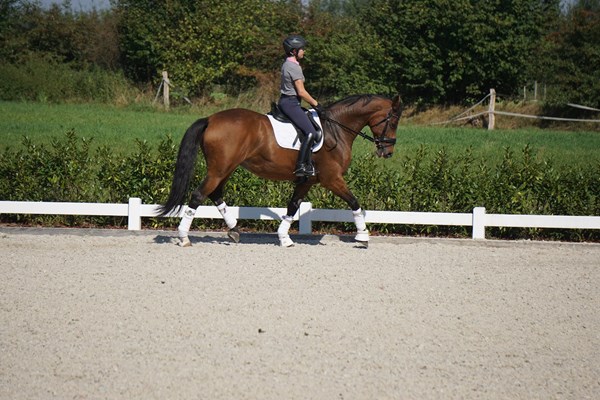Going Baroque

Spanish poet and essayist Juan Goytisolo once observed that, “A contemporary artist can use the findings of all epochs and all styles, from the most primitive literary expressions up to the most refined products of the baroque.” Though I am certain he was not referring to dressage riders, aren’t we, in some way, contemporary artists in our own right? In search of elegance and finesse, we explore all we can to refine our craft. That journey, as Goytisolo said, includes the most refined products of the baroque. In this month’s baroque issue, we hope to bring you just that.
In our article on the “Breed Unbiased” (p. 30), Australian Nicholas Fyffe does a wonderful job of explaining how he trains his Pura Raza Española, Fiero HGF, as he would the warmbloods in his barn—as an individual.
It is a long journey to training at the upper levels, and Diane Barber does a wonderful job chronicling what it takes to become a master horse trainer in her article about Vivi Garcia, on p. 52. Garcia credits her success to mentor Rafael Soto of the Royal Andalusian School of Equestrian Art in Jerez, Spain.
I had a chance to visit the school during my honeymoon and was inspired by the quality of horsemanship on display in the arena. At the time of my visit, a pupil was working piaffe in the center of the outdoor with the assistance of his trainer while a four-in-hand circled around them, not a single one distracted.
Keron Psillas seems to share my feelings about the region as she paints a picture of Spain as beautiful as I remember in “From Horses to Flamenco,” on p. 58. If her stunning photos are not enough to inspire you, check out the gorgeous dressage horses in the baroque gallery (p. 62) for more images of classical breeds from around the world.
For a change of pace, or as Goytisolo calls it, “findings of all styles,” check out Carole Grant’s training article on straightness in the horse (p. 34). Though we stray from the baroque theme, this article is a must-read from our archives. We have reprinted this how-to as part of our “Dressage Today Classics” series in our anniversary year to revisit the best of years past.
Perhaps another style that will you suit you is “The Clinic” with Susanne von Dietze (p. 26). Her biomechanically based tips are sure to help riders at every level, on any breed—baroque or not. The key is taking what you can from varying approaches to become the best rider you can be. Here is to dressage as art and all of the artists trying to create it.
To elegance and finesse!
Hilary Moore Hebert, Senior Editor
hmoore@aimmedia.com











